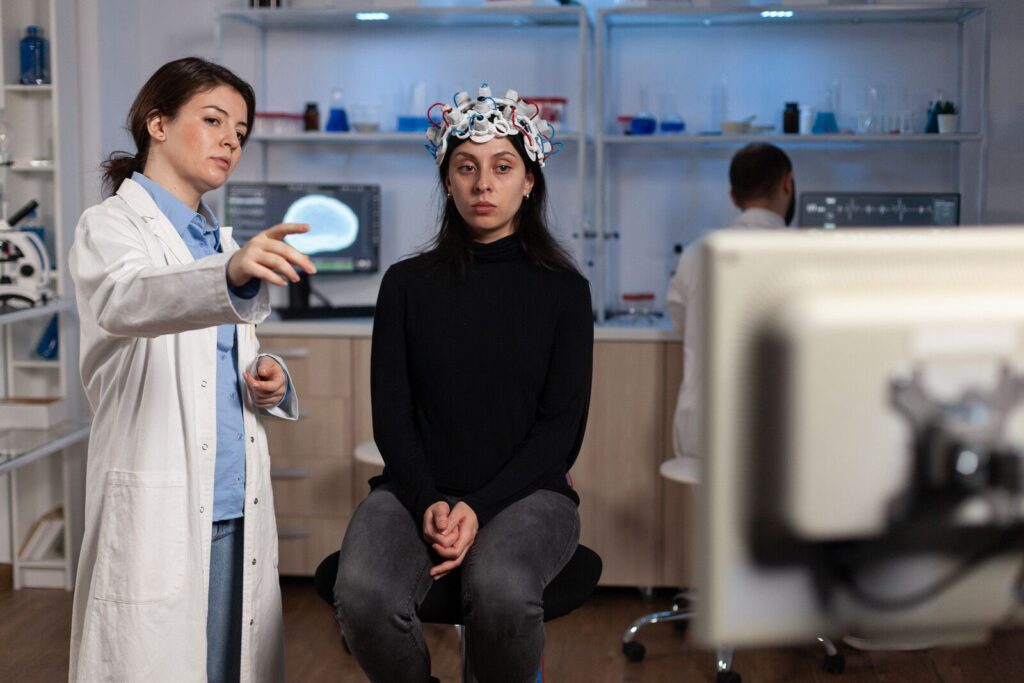Teachers are master observers. We are also curriculum specialists and make student-teacher relationships front and centre in our work. But we’re not so good at knowing what is going on inside the heads of our students. In fact, as Dr. Daniel Amen (2005) would say, we are among the only professionals who never look at the organ that we deal with. I would argue that educators absolutely must understand the brain and how it is impacted by teaching and learning.
Most of us didn’t learn about the brain in our basic teacher training. We may have talked about right or left-brain learners or learning styles, both of which are “poo-pooed” by neuroscientists. For some, anything to do with topics outside of their curriculum area is of little interest. And yet, the brain and how it functions or doesn’t function is relevant to every teacher, regardless of their curriculum specialty. Dr. Stephen Campbell, founder of the ENGRAMMETRON educational neuroscience lab at Simon Fraser University, would contend that teachers must learn about neuroscience and the brain in order to maintain agency within education. His fear is that educational neuroscience will be dominated by scientists and neurologists, with little input from educators. But that is not the only reason to stand up and pay attention to the brain.
There are distinct phenotypes or biomarkers of brain activity that are directly related to learning and emotional behaviours. That is, by looking at brain activity, we can identify or anticipate learning or emotional challenges that a student may experience. Further, there are numerous technologies available, and even more emerging, that can alter brain activity. Why would we leave this type of intervention to non-educators? If educators understood more about the brain and why it does or doesn’t learn, they would be optimally situated to guide interventions. In order to do this, we absolutely must learn about basic brain functioning. Let me provide a few examples of how neuroscience in education could improve our practice and learning for our students.
One example is identifying reading programs that are best suited to an individual’s brain functioning (Yoncheva, Wise, & McCandliss, 2015). This isn’t science fiction! Psychiatry is now able to determine the most suitable antidepressants for patients with mental health issues. They make that determination based, in part, on brain functioning. It takes the guesswork out of prescribing medications. So, imagine that you would be able to determine the best teaching methods for a student based on their brain activity. The debates over phonics and whole language learning would become moot.
Another example of how neuroscience could benefit education would be to identify where in the brain cognitive processes are breaking down. It is possible to identify areas in the brain where processes may be bottlenecked (Luck & Kappenman, 2012). This would help to remove the trial-and-error process for intervening.
Yet another application of neuroscience in education could be to measure brain health throughout a child’s education, and, in particular, if they are involved in physically demanding contact sports. Using EEGs (electroencephalograms) we can measure brain health in our student-athletes which is vitally important should they sustain any head injuries (Thatcher et al., 2001).
Another application of neuroscience in education is more simple. Students themselves can learn more about their own brain and body functioning, and then learn strategies to self-regulate. After all, isn’t this one of our main goals as educators? My challenge to you would be to learn as much as you can about the brain now so that you can be ahead of a very steep learning curve for all of us in education. You can do this by enrolling in a course in educational neuroscience or by finding out more about the work of neurotherapists and how they can complement the teaching and learning process. Technology is emerging to show us what is going on in the brains of our students. Let’s learn about these new tools!
References
Amen, D. G. (2005). Making a good brain great. Three Rivers Press.
Luck, S. J., & Kappenman, E. S. (Eds.) (2012). The Oxford handbook of event-related potential components. Oxford University Press.
Thatcher, R. W., North, D. M., Curtin, R. T., Walker, R. A., Biver, C. J., Gomez, J. F., & Salazar, A. M. (1989). An EEG Severity Index of Traumatic Brain Injury. Journal of Neuropsychiatry & Clinical Neuroscience, 13(1), 77-87.
Yoncheva, Y. N., Wise, J., & McCandliss, B. (2015). Hemispheric specialization for visual words is shaped by attention to sublexical units during initial learning. Brain and Language, 145-146, 23-33. http://dx.doi.org/10.1016/j.bandl.2015.04.001.
Dr. Calder Stegemann
Dr. Calder Stegemann is an educator, therapist, author, and researcher. She has extensive experience working effectively with children, teens, and adults as a teacher, counsellor, and university professor. After retiring from Thompson Rivers University in 2017 she returned to private practice with a focus on psychotherapy and neurotherapy. During the summer semester she teaches an educational neuroscience course that she developed—Mind, Brain, and Education: An Introduction to Educational Neuroscience. Dr. Calder Stegemann is Board Certified in Neurofeedback, is a Canadian Certified Counsellor, and recently joined the elite status as a QEEG Diplomate with the International QEEG Certification Board. She holds degrees in teaching (special education and mathematics), counselling, and educational psychology.
This article is featured in Canadian Teacher Magazine’s Fall 2023 issue.

